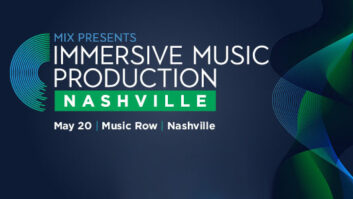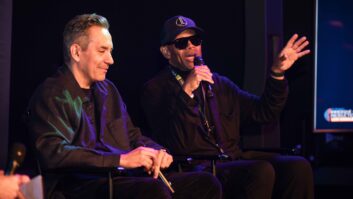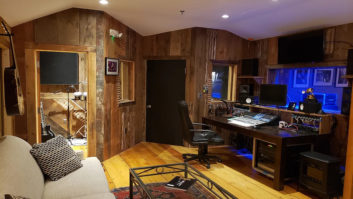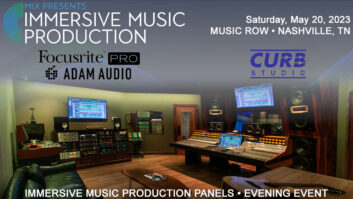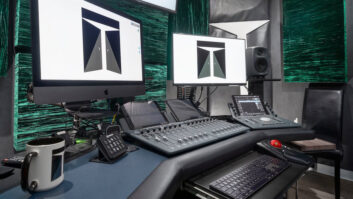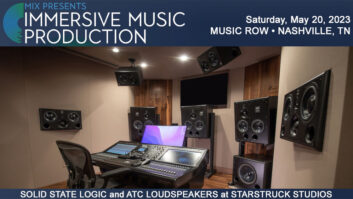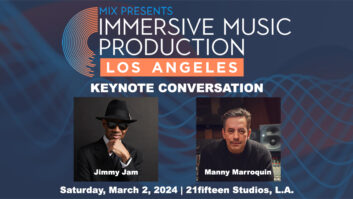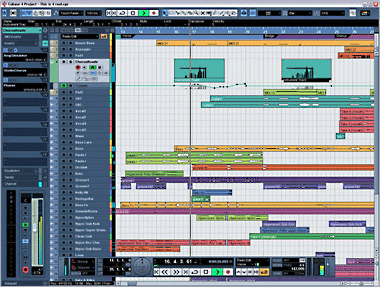
If I suddenly had $25,000 in cash to build my dream personal studio, rest assured I would not sniff at such a sum. To the contrary, a chunk of change like that available for music production would mean that my electronic-based music — for commercials, TV, film placements and personal artistry — had gone to the next level.
So with this budget, I’m still me, just a little more successful. That means I need to work comfortably and quickly by myself 90 percent of the time, but with the ability to get quality recordings with a vocalist, guitarist or horn player at a moment’s notice. I’m starting with a maxed-out computer (a Windows PC) and a room that supposedly sounds at least decent. In all hardware and software purchase decisions, my primary criterion will be the same: No one item will be allowed to bust the budget. All prices are approximate street.
DAW AND MORE
This is not going to be a commercial studio where other engineers’ work habits are much of a concern, so I’m going to go with the DAW I know and love best, Cubase SX3 ($599.99). (Cubase 4 had just been released as this issue went to press.) To me, Cubase offers a scientifically approachable method of mixing, with tremendous flexibility once you get familiar with all the facts of its deep workflow. To get sound directly in and out of the machine, I’m selecting the RME Fireface 400 ($999.97), which offers a great deal for the money: 24-bit/192kHz FireWire, active jitter suppression, and fully independent routing and mixing. Its SteadyClock feature allows it to be the sync reference for the entire studio. Expansion via an RME ADI-8 DS ($1,799.97) will bring me up to a full 16 inputs and outputs (at 96 kHz), with all my AD/DA concerns covered.
The studio’s emphasis will be on software, so I’ll need a few key suites in addition to Cubase. With its unparalleled loop-based arrangement capabilities, Sony ACID Pro 6 ($379.97) is indispensable to my workflow, especially with its vastly improved audio and MIDI recording capabilities. Propellerhead’s Reason 3 ($399.97) and ReCycle ($199.97) are also must-haves for creating grooves. I’ll also get the full host of Spectrasonics virtual instruments, including Stylus RMX for drums ($279.97), Atmosphere synth ($369.97) and Trilogy for bass ($319.97). Although it’s no longer manufactured, I’ll scour the ends of eBay to get the insanely original-sounding Hartmann Neuron VS synth (now approximately $300).
Speaking of VST plug-ins, the Universal Audio UAD-1 Ultra PAK ($1,199.97) will find a happy home in one of my PCI slots, providing plenty of its own DSP power for highly faithful re-creations of the 1176, Fairchild 670 and Pultec EQ, plus great reverbs and more. The Waves Masters bundle ($675) will prepare me for the “mastering” phase. (Self-mastering is an oxymoron in my book.) I really like the look of the new Masterclick Tempo Timing Software for film and video composers ($79.95). Also indispensable are the Kjaerhus Audio Golden Audio Channel ($198), PSP Vintage Warmer ($149), KVR Tone2 FilterBank2 ($49) and a wide variety of freeware VST synths and plug-ins that I’ve tracked down on the Web.
OUTSIDE THE BOX
To interface with everything inside the box, I’ll begin with the Novation ReMOTE SL 61 ($599.99). I love the weighted feel of Novation controllers, and its Automap templates for Cubase and Reason (among others) will save me a lot of time in those programs. The Roland HandSonic 15 ($899.97) is also a unique MIDI controller and sound source. I also demand the time-saving presence of the humble Creative Labs Prodikeys combination QWERTY/MIDI keyboard ($49.99). Ditto the 3M Ergonomic Mouse EM500 ($51.84), which allows your hand to mouse comfortably in a more neutral, “handshake” position. Instead of a large mixing surface, I’d opt for the USB PreSonus FaderPort ($199.97), which fits one long-throw motorized fader and several transport and master control functions into a small-footprint package.
For a mic pre, my mission was to get two channels of very high-quality inputs, EQ, and limiting and/or compression for less than $2,000. The Langevin Dual Vocal Combo ($1,800.97) by Manley Laboratories fits the bill, giving me a highly functional front end. Joining it will be the Daking FET II compressor ($1,995), which will also be on hand to cover the outbound signal from my analog summing box — an essential tool for serious “in-the-box” mixers — which will be the Dangerous Music 2-Bus ($2,649), still one of the best options for the money. The analog and digital Switchcraft 6425 ($699.97) patchbay will give me flexibility as I add gear.
When I’m recording live sounds and musicians, I don’t like doing it straight into the computer. For that insanely critical task, I prefer the a stand-alone workstation, especially the Yamaha AW1600 ($999) personal digital studio, a portable unit that records 16 tracks at 24-bit resolution. A Quik-Lok QL-400 mixer stand ($129.99) will also be key.
Sound design will probably be on my menu, and for that I’ve found that the Line 6 PODxt Live ($399.99) delivers great, real-time, sound-twisting capabilities via the large, assignable pedal; plus, it’s a great amp simulator for my guitarist friends. Assuming they love live looping as much as I do, the new Boss RC-50 Loop Station ($499.97) looks positively lustful.
Time for mics! With a Soundelux U195 ($1,080.97) and the venerable Shure SM57 ($99.97), I’m covered for 99 percent of the vocal and guitar recording situations, although this collection will continue to grow quickly.
Obviously, if I can’t hear all this correctly, what’s the point? The active JBL LSR4328P Pak ($1399.97/pair) comes bundled with a measurement mic that allows the units to calibrate to the room. Along with the powered JBL LSR4312SP subwoofer ($899.97), I’ll get full range and a solid upgrade path to surround when I get that first 5.1 job.
DON’T FORGET
Let’s not leave out the ergo-friendly furniture. The Raxxess ACD-30-45M ($299.97) is angled and configurable for future add-ons. Anyone who hasn’t tried a knee chair in the studio should: The Jobri Ergonomic Knee Chair ($199.99) could save your back and butt in the long haul.
Talking about saving your butt, I believe that business-class remote online storage of all my precious music data is a must. A search for “remote data storage” sites like www.ibackup.com revealed a year of automatic 100GB backup for about $1,000 — a bargain for true peace of mind.
The total to this point is $23,960.16, leaving me exactly enough headroom for $1,000 worth of cables and unexpected items, plus two boxes of smelling salts ($22.77 apiece) for reviving me when I walk into this beautiful room and find it waiting just for me.
David Weiss is Mix’s New York editor.
